How business owners can use Windows 11 to increase hybrid work efficiency & productivity
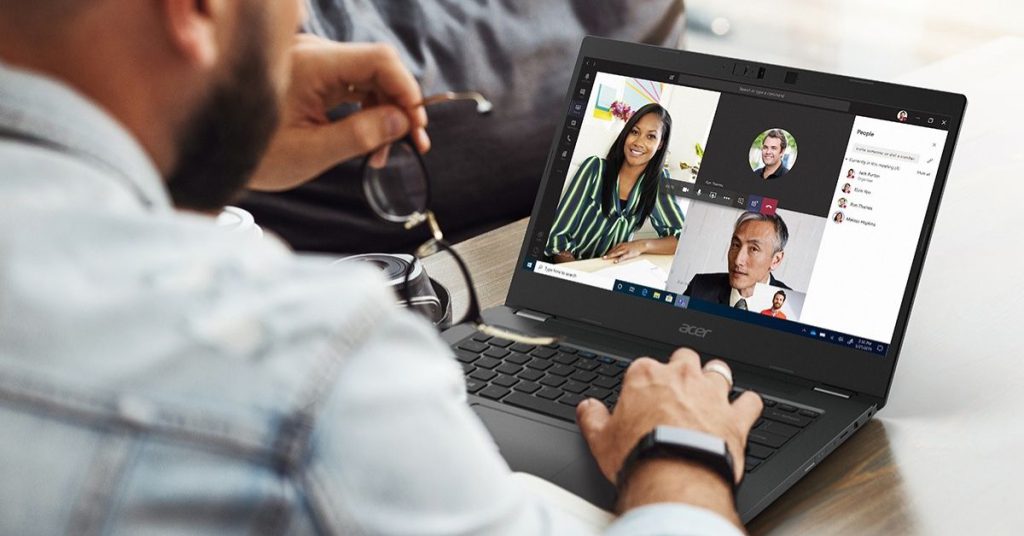
[This is a sponsored post with Acer.]
Prior to the pandemic, productivity and working in the office were considered non-mutually exclusive. Bosses and HR management teams typically prefer employees to be present at the workplace to optimise work efficiency and other processes.
Now though we have a mushrooming concept called hybrid work, and it’s a concept that many companies have come to embrace—or at least realise that they must soon adapt to.
Dictionary Time: A hybrid work model is a compromised approach to achieving more work-life balance and flexibility. Employees would spend their working hours sometimes at home, a remote location, the office, or a coworking space.
Thus there is a greater need for companies to be using the right tools, online platforms, and other resources to not just maintain productivity, but rather boost it further.
This is an ongoing need that Acer is acutely aware of, so they plan to fully take advantage of the new Windows 11 to meet this need.
Released on October 5, Windows 11 is already touted for its redesigned theme, better multi-monitor functionality, improved touch interface, and a refreshed Store with more Android apps to look forward to.
With these new and updated features, Windows 11 is priming the evolution of Microsoft and the question that remains now is this: how then can this latest release play a major role in a hybrid workforce?
Answers that any hybrid workforce can appreciate
Acer products will officially come with Windows 11 from November 9 onwards, so they are hosting an upcoming webinar to give some answers.
Titled “Acer commercial biz talk: Expand your business horizons”, this webinar aims to help users, especially businesses, maximise productivity and elevate their Acer experience.
In an effort to help businesses truly harness Windows 11 and the efficiency it comes with, Acer has included exclusive business experts in their event to share relevant tips and tricks of the trade.
Some examples of the panel speakers are:
- Erik Van Den Engel, a tenured professional in Regional Marketing Management, the position he has worked in for 8 years at Acer.
- Chan Weng Hong, General Manager of Acer Malaysia with over 20 years of experience within IT.
- Calvin Tan, a Commercial Specialist at Microsoft Malaysia for nearly 4 years.
- David Chen, Manager of Pan Asia Pacific Business, Management Department, Acer Inc. (HQ).
With over 30 years of collective experience, these business experts are highly trained and qualified in their respective fields.
How to sign up for Acer’s free webinar
Interested parties can register for the webinar here by filling in all the necessary details.
Date: December 2, 2021
Session: 10:00AM – 12:15PM
This large-scale virtual event will bring together like minded people who value productivity, security, durability, and reliability, to learn from the panel speakers. The Q&A session will allow curious participants to look into ways to accelerate their businesses’ growth and management.
Other than that, there will be a lucky draw for participants to stand a chance to win exclusive prizes such as the Acerpure Cozy, Acerpure purifier, and TravelMate P4.
Also Read: COVID-19 has driven the need for secure online signatures, which is this M’sian team’s forte
Featured Image Credit: Acer
Telegram launches sponsored messages – here’s why it’s now the best online ad solution

Disclaimer: The following opinion piece represents author’s personal views.
Telegram’s founder, Pavel Durov, officially announced on his channel last Friday what the company has already made mentions of in the past few weeks — Sponsored Messages, which will allow everyone to pay for advertisements on the independent social network.
But before you express your disappointment about another app receiving annoying interruptions from people you don’t know or like, you may want to read on and see if — for the first time ever — they could be quite useful.
“Win-win” vs “lose-lose” advertising
Telegram, like any other company, is not a charity. It has to make money somehow and advertising is typically one of the ways of achieving it, particularly with millions of users.
After its attempt at issuing ‘Gram’ cryptocurrency was thwarted by the US Securities and Exchange Commission, there was hardly any alternative left.
But one also has to bear in mind that advertising isn’t always bad — it’s a way of getting your message to new people, who would otherwise be difficult or impossible to reach. If companies didn’t advertise, they wouldn’t be able to sell much, so they wouldn’t also be able to provide many jobs for people who work for them.
Hence, as a tool, ads are neither good nor bad. It’s what we do with them that matters.
The most extreme example in the social media space is, of course, Facebook. Mark Zuckerberg is not only going to allow others to push content to your personal timeline, but also interrupt you while watching videos and have his “pixels” track your behaviour on millions of websites outside of Facebook itself.
The company collects a mountain of data about what you do, like, read, write, who you interact with, what you browse in online shops, what you read for news and even where you physically go with your mobile device.
It will then chop up, analyse and serve this data to an ever-growing pool of thirsty advertisers, who can use Facebook’s all-encompassing knowledge about you, to serve you ads that attempt to draw you away from what you’ve been busy doing — usually to get your money selling you something at the end of the process (often in highly misleading ways).

Google — built on advertising — is not much better although it, at least, still offers an advertising solution that simply shows sponsored results for topics you’re already searching for. In this way, it actually helps both you and the advertisers.
This is the sort of service I would describe as “win-win” — providing advertising to willing people, at an appropriate moment, without disturbing their other activities.
Most advertising is, however, highly interruptive and thus, very annoying. TV ads, radio commercials, leaflets, unsolicited mailbox spam and, on the internet, blinking banners, fake buttons and, the latest, clips coming on just in the middle of an interesting video or between songs, ruining the mood of the moment.

This, in contrast, is a “lose-lose” way of serving ads — hoping for accidental clicks or, very often, misleading people into clicking something they actually were never interested in the first place.
Some advertisers (particularly the dishonest ones) may find some short-term luck with this sort of promotions, but in the long run, they are really self-defeating.
Not only disturbing people in an inappropriate moment is not likely to get them to buy anything from you, but it may actually build negative associations with your brand as one that is intrusive or desperate.
That said, aside from search advertising, which simply expands options available to you, in response to whatever you’re already looking for anyway, there aren’t really any other channels that would work quite as usefully to both publishers and users.
Telegram might just about to change that.
When it comes to advertising, less is more

With the launch of Sponsored Messages, the company has quite openly emphasised things that some may consider a handicap.
It does not collect any personal data, nor track your behavior outside of the app. Publishers can only link to their Telegram channels or bots, not external websites, so all interaction must happen within the app.
Additionally, promoted messages will only appear on channels above 1,000 subscribers and ONLY after the user has read all of his recently unread messages.
But what seems like a rotten deal for advertisers is actually a blessing in disguise.
Because you can target users by topics or channels, it’s much easier to make a decision on what to spend your money on.
Facebook, for instance, with its abundance of options, makes it difficult for advertisers to even know what’s going on. Success of campaigns there is largely down to algorithms finding out who may potentially be your best customer, but this may require relatively high spending over prolonged periods of time, so that enough data can be collected to achieve this (and there is no guarantee that it ever will).
Google’s solutions, on the other hand, are not suitable for all of advertising (particularly content), Twitter is limited and restrictive, as are native ad networks like Outbrain (they will happily serve people some tabloid-level garbage but many products and topics are a no-no).
Telegram, in comparison, is both more open and simple. Even if you fail, you fail quickly and can test more rapidly.
And because you can target specific channels, it means you can also do your own research, instead of relying on an opaque piece of code, while being charged for it for days, hoping to strike gold at some point.

Secondly, the requirement to direct people to your own channels creates a necessity to build presence on Telegram. It’s harder to mislead users if you can’t take them outside of the network to your own phishing or otherwise misleading website.
It’s a win for those with genuine audiences and interesting content and a win for users, if fewer spammers seek to abuse Telegram for nefarious purposes. It’s also easier for Telegram itself to moderate ads and quickly get rid of the offending ones and their authors.
Finally, because sponsored messages will only appear when users have read all their pending messages on the channel, they are not interrupted in the middle of reading or discussing anything with other people.
Ads become an addition, an extension of the experience, likely relevant to their interests and the topic of a given channel, that they get served when there’s nothing more for them to consume — what makes them more likely to engage with the message than if they were interrupted.
It’s a win for advertisers, raising effectiveness of advertising, and a win for app users, who may get useful suggestions to follow channels that may be of their interest too.
In addition, it is hard to overstate the importance of another independent, non-American advertising channel opening up just as Big Tech from the Bay Area is tightening the screw on what it accepts on its networks.
Telegram is certainly more committed to free expression and it should be considerably easier for legitimate advertisers to promote their content, services or products on the platform than it is on Facebook, Google or other.
With Silicon Valley giants, your success depends on the whims of ever-changing guidelines and even your personal activity, as writing unpopular things can get your personal account locked out of Facebook advertising, even if your business is unrelated to your personal life.
That’s why I welcome Telegram’s new features both as an advertiser and a regular user. It can transform the app from a messenger into a real social network.
Featured Image Credit: Gulte
Also Read: Shopee is now equal to Alibaba’s entire international e-commerce, and about to outgrow it
You may not realise it, but you’re already living in multiple metaverses—here’s how
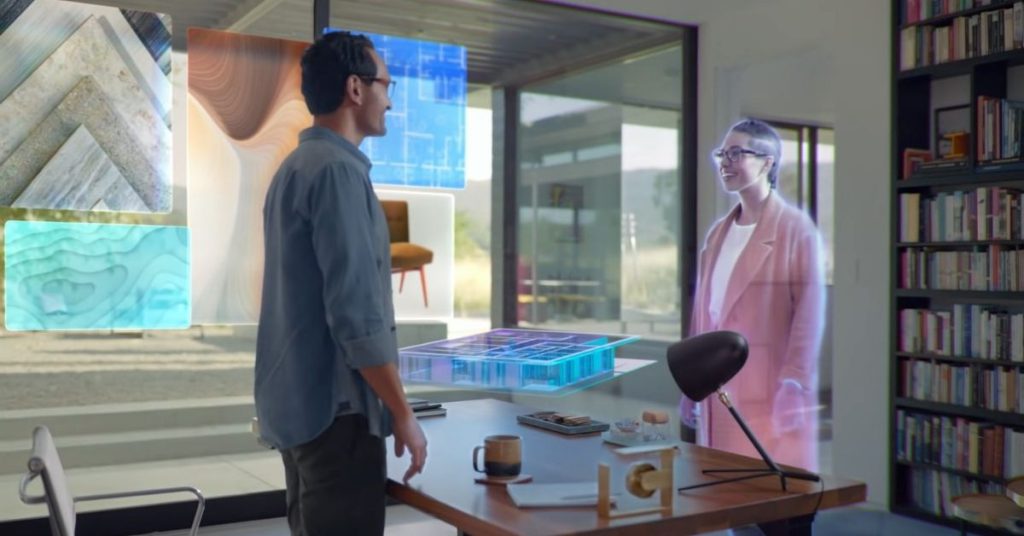
Newsflash: we are already living in the metaverse. But not everyone may understand how, or even know what it means.
And no, Mark Zuckerberg didn’t come up with it. The term “metaverse” is nothing new. The concept has been around since 1992 when author Neal Stephenson (who was credited with coining the term) used it in his science fiction novel “Snow Crash”.
In the dystopic, cyberpunk novel, he envisioned lifelike avatars who would meet in realistic 3D buildings and other virtual reality environments.
Please explain more.
“Metaverse” can be broken into “meta” and “verse”. The word meta has many meanings, but in this case, its meaning is likely tied to the Ancient Greeks’ definitions of it: “beyond”, “after”, or “behind”.
Meanwhile, “verse” comes from the word “universe” and is often used as a suffix to describe a specific sphere or area. Take for example the word “Twitterverse” or “Twittersphere”, used to describe the spaces in which users interact on the social media platform.
Together, the two words give the meaning of “beyond universe”, which is generally understood as a virtual world beyond, or overlaying, our physical world.
At its core, the metaverse is an imagined, virtual space where you can live multiple lives, be who you want, make friends from all across the world, do what you want, and more. It’s an extension of what you can achieve in real life.
Essentially, if you’ve played a role-playing or a life simulation game, chances are, you’re already part of the metaverse.
Whether it’s The Sims, Second Life, or Genshin Impact, the acts of playing such games and living your virtual life in them while fostering social connections (in the latter two) all fall under what you would do in a metaverse.
At Vulcan Post, we’ve even used Gather, a virtual space for friends and families, but more popularly, for colleagues to “meet” up, chat, and “work” like they used to in person, from home—which is exactly what we did, and still do for our Friday “office” lunches.

When doing up our Gather avatars, some of us chose to go the more realistic route by designing ones that looked close to our real selves, while some of us straight up chose to be a pirate, for example. (Yes, it was me. No, I do not want to be a pirate in real life, but in the metaverse, I can be anyone I want to be.)
Okay, but aren’t AR and VR part of the metaverse?
Yes, they are. But they don’t necessarily have to be in order to make the metaverse, a metaverse. They’re more of a modern addition to the basic concept of the metaverse as we know it, taking the virtual universe to the next level.

Large tech companies are capitalising on this, with Meta (previously Facebook) announcing its own version of the metaverse, complete with usage of its Oculus Quest VR headsets so users can go shopping, socialise, go to work, and more, through the virtual world.
Just imagine not needing to leave your house, yet being able to be as “present” as can be in all these different settings. But if you still wanted a taste of the real world, well, Meta has something for you too: AR glasses.

This is still in the works, but the company’s goal is to allow users access to a hybrid reality. You can invite your friends into your actual home, but they don’t really have to be there. Just slip on your AR glasses and enjoy the night with your friends’ avatars.
Of course, this ambitious version of the metaverse has yet to be fully fleshed out, and there aren’t notable existing examples to speak of yet.
Why should I care about all this?
Like it or not, this is undoubtedly going to be our future. Nearly everything about how we interact with one another online today is a component of the metaverse.
The pandemic also accelerated our adoption of the metaverse. For me, it was through Genshin Impact and Gather, both of which I heavily relied on early in the pandemic to retain a semblance of normalcy.
I’m not sure if I’m prepared to live a fully virtual life, but I won’t say no to trying it out. Because we don’t have anything concrete yet, it’s easy to view this future through rose-tinted glasses.
It may all sound mighty interesting and exciting on the surface, but not enough research has been done yet to understand the impact of the metaverse on the human psyche. This is where we’ll need to tread carefully, call out issues, and pay attention to the criticism of these technologies.
On the brighter side, the metaverse could hold plenty of future jobs as well, since talents will be needed to flesh out these virtual worlds, the environments in them, the avatars people can use, and more.

There’s money to be made in the industry, with Morgan Stanley, an American multinational investment bank and financial services company, stating that the metaverse is an US$8 trillion addressable market.
This includes the potential of the metaverse when it comes to advertising and e-commerce opportunities too.
As non-fungible tokens (NFTs) are also now in the gamified world, it’s likely we’ll see NFT-savvy brands selling digital assets to us in the metaverse.
-//-
NFTs are still slowly finding their place in Malaysia, and we’re mainly seeing artists leverage this trend for now.
There have been a few businesses who attempted to release their own NFTs, but it seems like it’s yet to really catch on amongst SMEs here.
But steps are being taken to catch up. Recently, iCandy acquired Lemon Sky Studios with the intention to develop casual and AAA games as part of their pro-metaverse and blockchain initiatives.
It’s still early days yet, but the development of the metaverse and eventual pros and cons we’ll learn of it is surely something worth keeping an eye on.
- Read what we’ve written on NFTs and how they’re growing in Malaysia here.
Also Read: 22 is not too young for life insurance—making sense of the confusing myths and facts
Featured Image Credit: Meta
iCandy acquires Lemon Sky for RM135mil to expand into AAA games & the metaverse
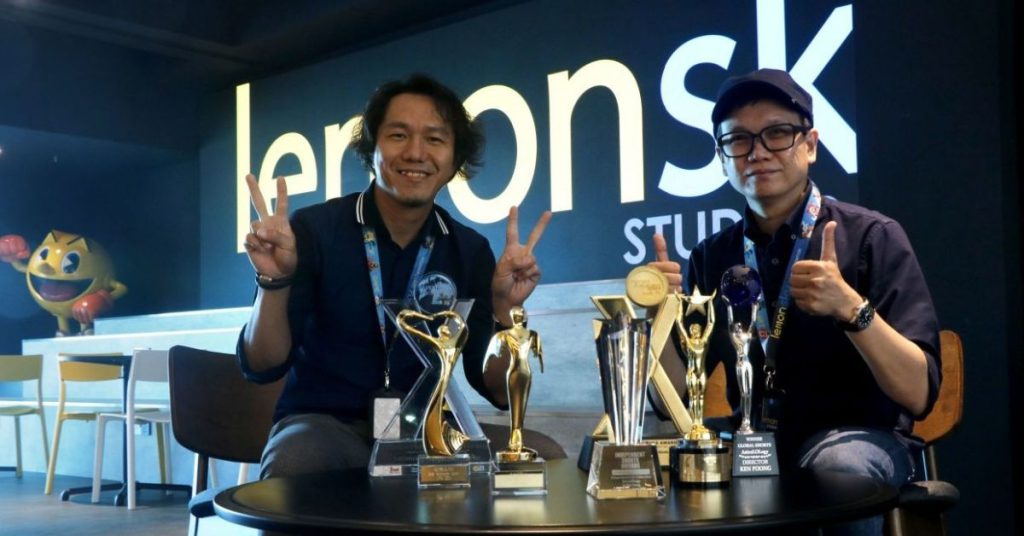
In recent news, iCandy Interactive (iCandy) announced it will be acquiring 100% of Lemon Sky Studios (Lemon Sky) to scale its existing capabilities.
This will make it the largest pure-play game development company on the Australian Stock Exchange (ASX), and in Australia and SEA too.
With more than 450 employees, the acquisition is projected to generate no less than A$17 million (US$12.36 million or RM51.5 million) revenue per annum.
In-house game design and development
As a refresher, iCandy’s core business is in game development, game publishing, and e-sports, with its titles played by over 360 million mobile gamers worldwide.
Lemon Sky is a CGI art and animation studio that provides outsourced services to clientele including Microsoft Studios, EA Entertainment, Disney, and Nickelodeon.

Back in November 2020, it was announced that Lemon Sky and iCandy were collaborating to create a new gaming company for AAA mobile games.
iCandy’s COO, Desmond Lee, told Vulcan Post that the new company, called Sky Candy, is now an independent studio and focuses on AAA mobile games.
While iCandy is known for publishing mobile game titles, Desmond told us that the acquisition of Lemon Sky will bring the additional expansion of iCandy into the console and PC space.

Prior to this, iCandy hadn’t outsourced any art and animation services from Lemon Sky for its mobile games. But the team has recognised Lemon Sky’s strengths through its animation work for AAA gaming titles such as Overwatch 2, Call of Duty: Infinite Warfare, and SimCity, so this acquisition speaks for itself, according to Desmond.
“Collaborative partnerships in the creative industry are pertinent to keeping things fresh and innovative. We are positive that this merger will encourage creative working methods and bring about new ideas,” said Cheng-Fei Wong, CEO of Lemon Sky.
However, Desmond clarified that there will not be a change in leadership following this acquisition, and Lemon Sky will continue its outsourcing work.
Into the metaverse
Other than increased manpower, revenue, and capabilities, both teams are confident that this acquisition will help the group push towards building the extended metaverse.
Did you know: The metaverse is a digital reality that combines aspects of social media, online gaming, augmented reality (AR), virtual reality (VR), and cryptocurrencies to allow users to interact virtually.
This will be done through both companies’ regional expansion plans in developing casual and AAA gaming on the blockchain for the open metaverse.
Although Desmond wasn’t able to share any teasers on what they have in store to execute this, he did tell us that there are already a few plans in the pipeline.
After all, the development of the open metaverse is still in its nascent stages of conceptualisation and leaves much room to be explored.
“While our current focus is on the gaming community within this new and quickly expanding space, we have our sights on going beyond that to where opportunities present themselves,” Desmond shared.
A huge valuation for the acquisition
According to iCandy’s press release, this acquisition will be at a valuation of A$44.5 million (US$32.4 million or RM135 million). It is expected to be fulfilled together with cash and newly issued iCandy shares.
In parallel to the merger, iCandy has raised A$40 million (US$29.1 million or RM121.2 million) from institutional investors through a placement that’s oversubscribed (where there is a higher demand for shares than the actual supply).
The funding round was led by another gaming company investing in the metaverse, Animoca Brands, a global leader in gamification technology and blockchain gaming.
Animoca Brands also has a portfolio of over 100 investments in NFT-related companies and decentralised projects contributing to building the open metaverse, so it’s likely we’ll be seeing interesting projects emerging from iCandy’s Lemon Sky acquisition soon.
Also Read: COVID-19 has driven the need for secure online signatures, which is this M’sian team’s forte
Featured Image Credit: Lemon Sky Studios
Dreamcore marks 5th year with new 10,000 sq ft space: see your custom PC get built and test it
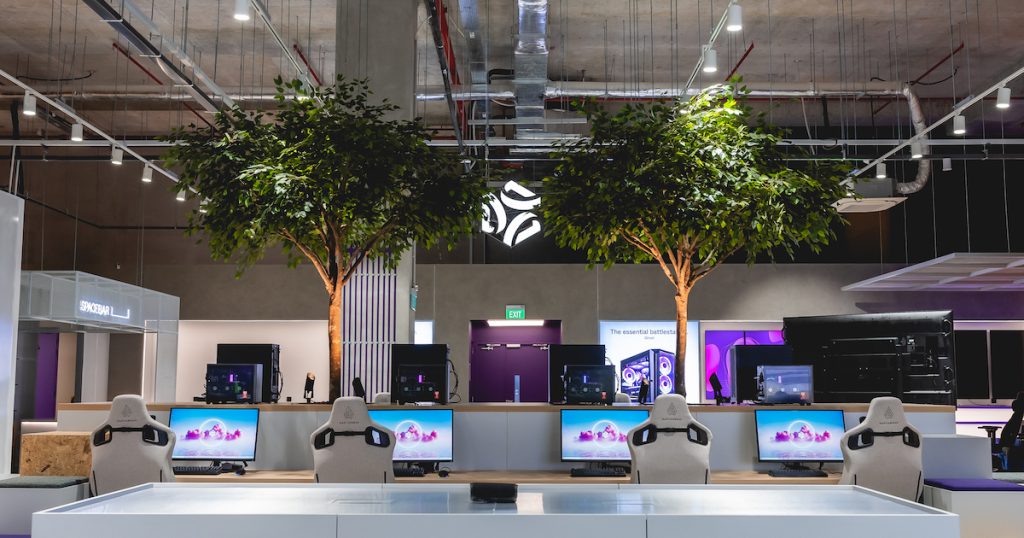
For avid gamers, you would know of Dreamcore as a top-notch place to get custom-built PCs.
The company was started by three Singaporeans — Shaun Tan, Eugene Lim and Kwan Wei Zhong — who all met at an IT show (no surprises there).

Wei Zhong and Eugene worked for competing companies, and Shaun convinced them to band together to build Dreamcore.
Since its inception in 2016, it has been hitting one milestone after another — from earning 1,000+ five-star reviews, clinching a Top 15 recipient of the Emerging Enterprise Award 2021, achieving more than double year-on-year growth, and a 50 per cent increase in staff headcount.
The team at Dreamcore is now 30-people strong. As part of its fifth-anniversary celebrations, it unveiled today (November 25) its new 10,000 square-foot space as part of its commitment to offer a holistic support experience.
Dubbed Dream Centre, it functions as their expanded office and retail space that comes equipped with concierge and service zones and a state-of-the-art PC assembly. It also features a dedicated esports training facility and an integrated gaming experience centre.
Here’s what to expect when you head down to Dream Centre when they officially open doors to the public on December 1.
The ultimate guided customer experience

Walking into Dream Centre is both inviting and exciting — you will first be greeted by a mural commissioned by a local artist.
Complete with futuristic indoor trees, sleek chrome finishings, and rows of gaming chairs, you’d never want to leave the Dream Centre. In fact, you don’t have to.
The interactive, experiential gaming centre is where you can try out Dreamcore’s range of products, and you are free to stay as long as you like. They are not just being polite when they say that; Dreamcore wants you to feel at home in their space.

Dreamcore truly understands that the world of custom builds, PCs, and even electronics can be intimidating and scary for some. The Dream Centre is equipped with friendly staff who will never try to hard-sell their products to you and are always ready to answer your questions.
There are three Configuration Stations on-site where you can ask any question that comes to mind. Dreamcore sees this as a separate concierge service that adds to the customer experience.
People may have a certain perception of custom builds — and the challenge is helping them overcome certain barriers around perceived complexity and hassle of it. It can be a smooth and informed process and that’s what we served to deliver.
– Shaun Tan, founder and CEO of Dreamcore
What custom PC dreams are made of

The main ethos of Dreamcore is trust. That’s why they opted — in Shaun’s words — “a Din Tai Fung-style” open kitchen concept where you can witness your PC assembly right there and then, if you’re lucky, of course.
It is this transparency, both literally and figuratively, that Dreamcore wants to advocate with this new retail store. This way, you can always be sure of the quality you’re getting and take a peek into the custom PC building world.
Behind the folks assembling your PCs, there is another round of quality control where the diligent staff of Dreamcore’s backend team are running various checks on your PC.
In the upcoming months, the company will also be enhancing its website experience and introducing free workshops to help consumers get more out of their PC builds, whether for content creation and editing, professions, or hobbies.

Dream Centre also houses a dedicated e-sports training room. One of Dreamcore’s current partners is Paper Rex, who is the only Southeast Asian representative in this year’s Valorant Champions Tour Masters, an international eSports tournament in Berlin.
Besides a swanky new retail space with spacious showrooms, Dream Centre is where all the ‘Dream-makers’ make all the magic happen.
We got to take a look at their “Skunk Room” or the R&D room, where Shaun and another staff ideate and test all the products we see under Dreamcore.

There is also a cosy area for staff to have their lunch that comes equipped with a giant pantry and gaming console for staff to unwind.
It’s a flurry of activity at Dreamcore’s new Dream Centre, and it only spells all the exciting things they have in store for us.
Accelerated business growth despite Covid-19
Dreamcore’s growth was accelerated in 2020 when Singapore transitioned to working from home and more customers turned to Dreamcore for their ultimate custom PC set-up for work and play.
This year, with work from home remaining as the default, Dreamcore has seen demand match that of 2020, signalling a growing market for custom PCs in the future “new normal”.
In the next three years, Dreamcore is looking to grow its business two-fold, and continue to create top of the line products to meet the needs of content creators and professionals.
“We’re so proud of how far we’ve come in the last five years. The opening of the Dream Centre is a testament to the hard work and dedication of each and every one of our team, the Dream-makers. We can’t wait to welcome our customers to this space, so they can have an up-close and personal experience of the custom PC building process,” said Shaun.
Those who are keen to visit the new Dream Centre from December 1. It is located at at Precise Tree, 55 Kim Chuan Drive; and will be open from 11am to 8pm on weekdays, and 11am to 6pm on weekends.
Featured Image Credit: Dreamcore
Also Read: Key it any way you want: A look at the growing trend of mechanical, custom keyboards in S’pore
S’pore’s Hepmil Media Group, parent company of SGAG, raises US$10M in Series A round
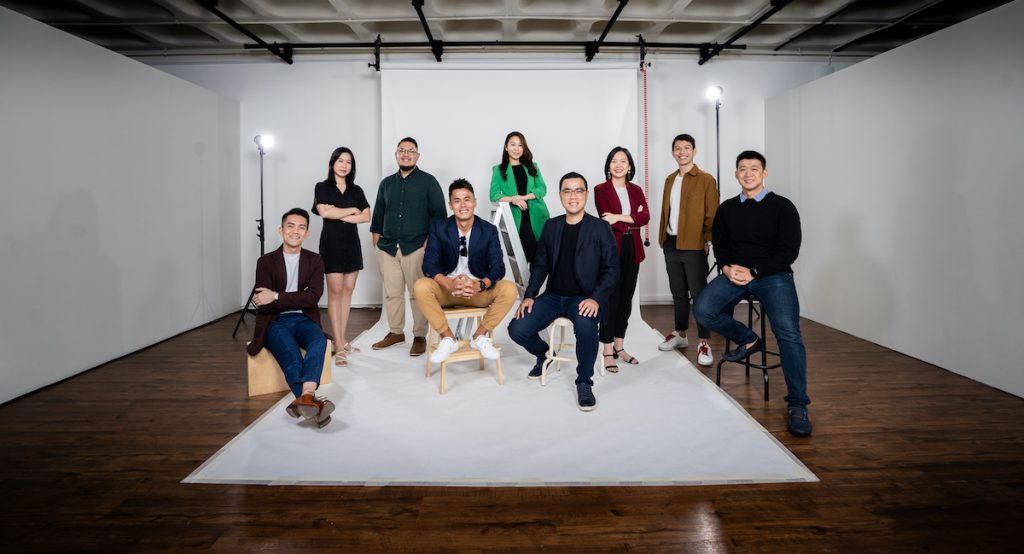
It’s been profitable since day one
Hepmil also plans to grow more revenue streams, particularly in developing content capabilities to serve regional commerce players in their direct-to-consumer efforts, as well as expand into Thailand and Vietnam in 2022.
The company has remained profitable since its inception, as it grows its revenue streams from one to eight.
With a presence in four markets across SEA, Hepmil Media Group has witnessed a strong revenue performance in 2020 despite pandemic-driven challenges.
The Group attributes the solid performance to a rising demand for online content and advertising inventory, as brands pivot to a digital-first approach to reach an ever-growing online customer base.

“Through expansion and investing in capabilities building to push new, innovative solutions for brands, we hope to be able to redefine SEA’s digital media and entertainment sector, and to remain the preferred platform for brands to work with,” said Karl Mak, CEO and co-founder of Hepmil Media Group.
In the coming months, Hepmil Media Group will also enter a joint venture with Bent Pixels to form Bent Pixels Asia Private Limited.
Headquartered in Singapore, Bent Pixels Asia will enable Hepmil Media Group to expand its influence and reach within the esports community in SEA, by being the preferred provider for YouTube reserved media in Singapore, Malaysia, Indonesia and the Philippines.
The Group is also looking to expand HCN, which connects the region’s leading and up-and-coming comedy and entertainment creators to co-create content and tap on reserve ad inventory to ensure targeted campaigns are engaging and effective.
Currently, the Network features over 300 creators in SEA, contributing to more than three billion views monthly.
At the same time, it is also looking to deepen the capabilities in SGAG, MGAG and PGAG to support new niche content areas, such as in social commerce.
This will include a new incubation programme to empower creators to grow their social selling capabilities, and partnerships with regional e-commerce partners to drive their direct-to-consumers efforts.
Lastly, the Group will also beef up its team to support expansion of operations in the region, as well as create new roles to support further development in the digital media space.
Featured Image Credit: Hepmil Media Group
Also Read: How These 2 S’porean Millennials Built A Biz Amid COVID-19 By Tapping On The TikTok Trend

